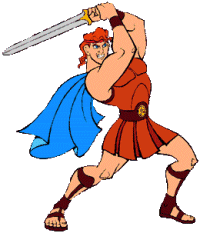
A gradual but inevitable descent into cricket-based loathing and bile.
The World According To Phil Hughes
In the buildup to the Ashes we looked at the prospects of players such as Shane Watson and Ed Cowan. Further back we unwrapped the enigma that was David Warner, to see if a decent cricketer lay hidden beneath all the hype (short answer: no). Today, however, it’s time to turn to the true elephant in the Australian batting lineup. A player whose fan base can be literally narrowed down to his immediate family and John Inverarity. Just what the hell is going on with Phil Hughes anyway?
If strength is to be found in adversity, Hughes must be a veritable Herakles (or Hercules if you conform to the dumbed down American version) of the Australian dressing room. At 24 years of age he has already been dropped twice (not counting brief returns in 2010) from the Test team, and but for Usman Khawaja’s legendary difficulties with authority (and seemingly body fat indexes), would have justifiably been dropped for a third time during the tour of India. Instead he, in Inverarity’s eyes at least, saved his skin by overcoming his demons and getting on top of the Indian spinners. By which he meant that Hughes simply threw caution to the wind, cleared his front foot and swung across the line. A tactic which admittedly worked. For a bit.
For a batsman who, after his first calendar year in Test cricket, boasted an average of over 50, that’s a hell of a long way to fall. Admittedly Hughes can consider himself somewhat unfortunate when dropped after just two Tests of the 2009 Ashes. Sure he looked scared to death of Andrew Flintoff, but after his spectacular start could have expected a little more time to prove himself. Instead he was dumped back to Shield cricket, a purgatory from which he was recalled for the final three Tests of the 2010/11 Ashes to cover for the injured Simon Katich, despite being in woeful form at the time. Which means Hughes was dropped when in decent form, and then reselected when in rubbish form. None of which makes much sense. But that’s contemporary Australian cricket for you.
Despite not convincing anyone that he really belonged, Hughes was retained in the Test team (largely owing to the fact that there were precious few other options available) until that series against New Zealand in 2011/12, where ‘caught Guptill bowled Martin’ did him time and time again. That’s the point at which Hughes’ international career should have been sent on long service leave. His confidence was clearly shot, his technique a mess, and he needed a long respite in domestic cricket to rebuild his game. Sadly for him, it wasn’t to be.
After a decent start to the 2012/13 Australian domestic season, Hughes was once again parachuted back into the Test team. This time his landing was at least cushioned by the corpse of Rob Quiney. And the fact that Sri Lanka are really not very good. But despite a decent(ish) start in that series, the tour of India proved he was in no way ready for a return to Test cricket. Simply put, the selectors have made a massive mistake in rushing him back and are now clinging on to the hope that if they persist with him long enough, he will eventually come good.
None of which is Hughes’s fault. Back in the latter part of the last decade he was clearly the standout batsman on the Australian domestic scene. Involved in an epic duel with Phil Jacques for the Australian opening spot vacated by Matthew Hayden, Hughes beat out his more experienced colleague by sheer weight of runs. Nobody could argue with his elevation in 2009, and his early success seemed to vindicate the selectors’ faith. But since then his career has been one long story of mismanagement. Dropped prematurely, returned prematurely, then dropped again only when his position had been rendered utterly untenable (not to say a complete embarrassment to Australian cricket), Hughes has been once again been returned to the Test team far too soon, as the tour of India proved.
And so to the Ashes. At Trent Bridge, his 81* was a more than reasonable innings, full of rapier cuts and vicious drives. It would have attracted more positive comments if it weren’t for young Ashton Agar doing even better at the other end. In the second innings, he only faced eight balls before being given out LBW by a delicate margin against Graeme Swann. For the second Test, Australia once again reshuffled the batting order and Hughes went up from No. 6 to No. 4. His wafted drive to a wide delivery from Tim Bresnan was characteristically loose – and typical of the shakiness and mental fragility of the top order, whilst a 21-ball battle to score one run was short and not very sweet.
All of these experiences have conspired to age Hughes beyond his relative tender years. He now speaks like a grizzled veteran who knows that fate can be fickle and each Test his last. He actually sounds a lot like Ricky Ponting did in the years leading up to his retirement, constantly on the defensive and adamant his technique is strong enough to withstand the rigors of Test cricket. At 24 years of age he has already developed a thousand yard stare. Just another sad victim claimed by the war waged by successive selectors on Australian cricket.




No Comments
Post a Comment